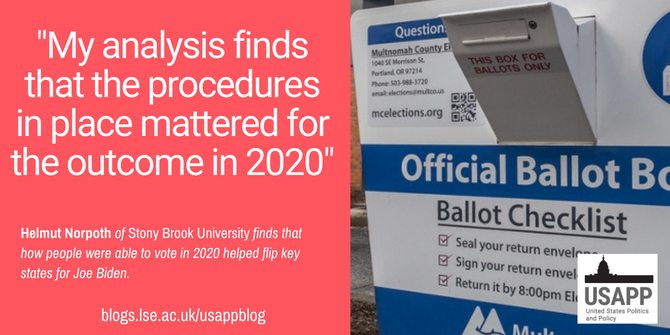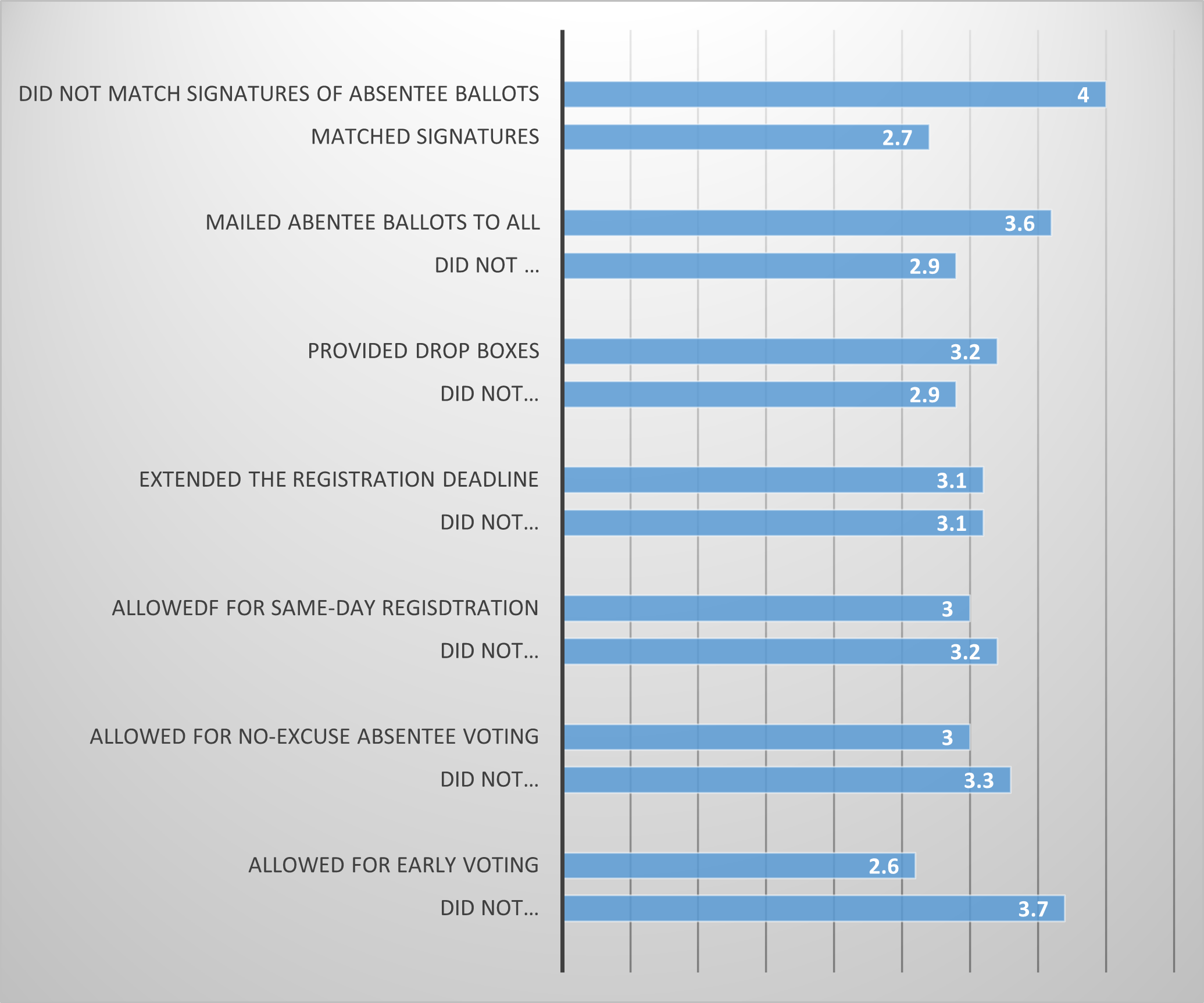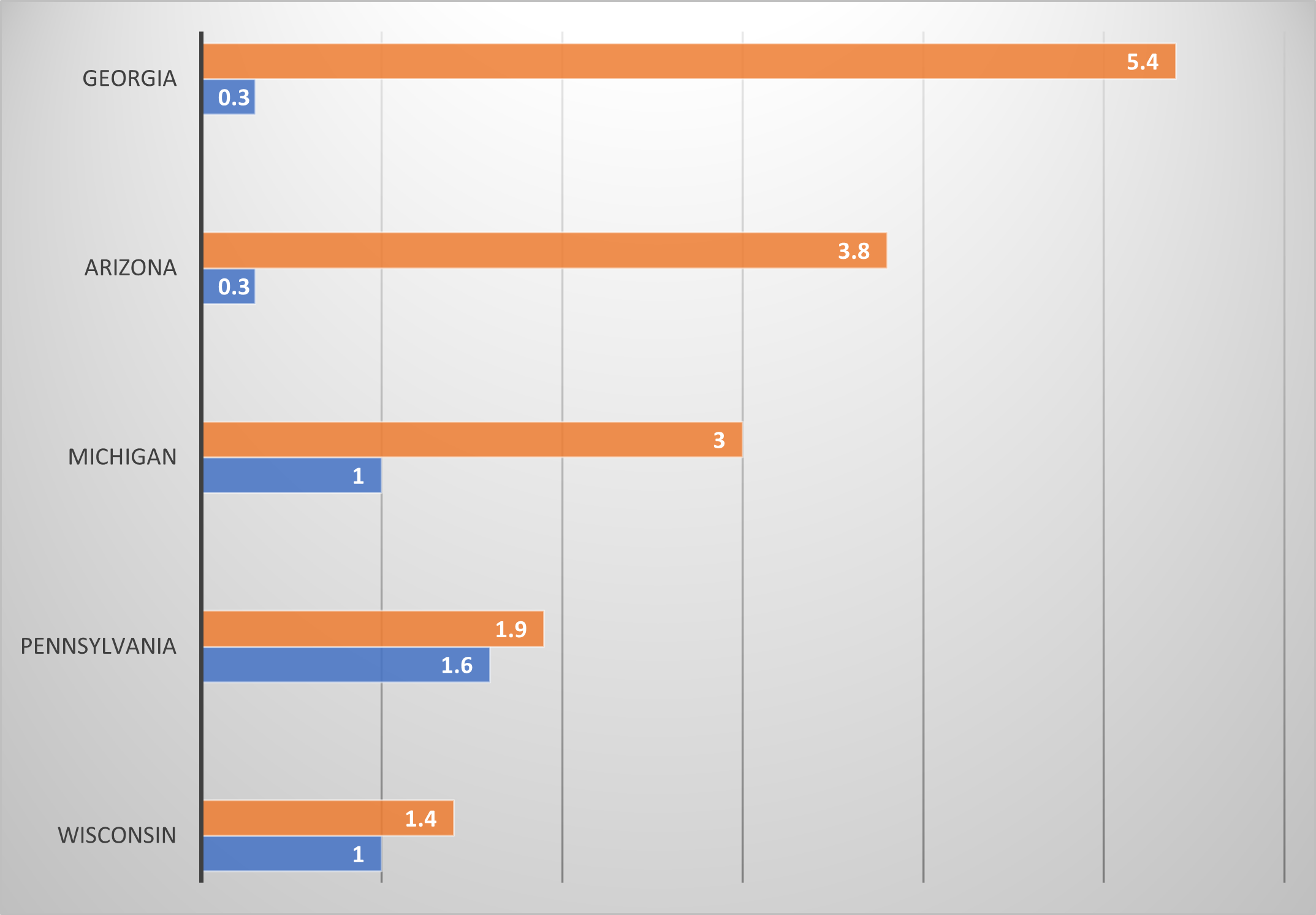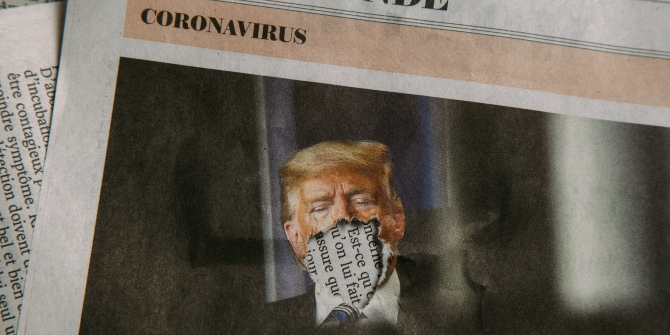 The COVID-19 pandemic meant that in the 2020 presidential election, many Americans were able to vote differently by using drop boxes or mail-in ballots. Helmut Norpoth examines whether these different voting methods might have influenced the election’s outcome. He finds that while these methods may have benefitted Joe Biden in Wisconsin and Pennsylvania, they were not decisive, only making his electoral victory more comfortable.
The COVID-19 pandemic meant that in the 2020 presidential election, many Americans were able to vote differently by using drop boxes or mail-in ballots. Helmut Norpoth examines whether these different voting methods might have influenced the election’s outcome. He finds that while these methods may have benefitted Joe Biden in Wisconsin and Pennsylvania, they were not decisive, only making his electoral victory more comfortable.
Despite Joe Biden’s victory with 302 Electoral Votes to Donald Trump’s 232, the 2020 presidential election remains unsettled for many in America. In June, at their state convention, Texas Republicans adopted a resolution stating that due to “substantial election fraud” in the 2020 presidential election Joe Biden was “not legitimately elected by the people of the United States.” It is a claim widely shared and touted by GOP loyalists, fueling their campaigning in the upcoming midterm elections and beyond. On the other side of the partisan divide, Democrats have branded this claim as “The Big Lie” and expose its peddlers as enemies of democracy, as the January 6 hearings make clear. Despite taking place nearly two years ago, the 2020 election may be a future election issue for some time to come.
Against this heated backdrop I have examined whether the voting procedures as spelled out in each state mattered for the outcome of the 2020 election. The COVID-19 pandemic prompted many states to loosen the procedures governing how and when Americans would cast their votes (how elections are administered is up to the states, rather than the federal government). Blue states generally favored relaxations of rules making it easier to vote, especially relating to absentee (mail) voting, while red states resisted them. It does not take a cynic to suspect partisan calculations behind those efforts. Even where rules did not change, the pandemic drove voters to take advantage of opportunities for absentee voting in record numbers.
My analysis finds that the procedures in place mattered for the outcome in 2020. In particular, the lack of signature matching of absentee (mail) ballots or mailing absentee ballots to all without prior request along with the provision of drop boxes boosted the Democratic vote in three states that Trump had carried in 2016: Michigan, Pennsylvania, and Wisconsin. In the manner of a natural experiment, some states used a given procedure while others did not. Also, using the change of the Democratic vote between 2016 and 2020 further controls for confounding effects on the vote. Biden’s ability to flip key states did owe a good deal to mail ballots and drop boxes.

“Vote by Mail – 3/21/2020 Portland Lone Fir Cemetery Walk” by Mark McClure is licensed under CC BY NC SA 2.0
I am grateful to the following outlets for compiling state-by-state information on election procedures in 2020: The U.S. Vote Foundation; Ballotpedia; the National Conference of State Legislatures; the Campaign Legal Center; and the U.S. Election Project. This is the list of procedures I examined (the number of states using each is in parentheses):
- Provision of drop-boxes (40)
- No-excuse absentee voting (35)
- Early voting (28)
- Same-Day registration (20)
- No matching of signatures of absentee ballots (16)
- Mailing absentee ballots to all registered voters (15)
- Extending the registration deadline (9)
My vote metric is the change of the Democratic vote percentage in a state (plus DC) between 2016 and 2020, as shown in Figure 1. To begin with the most consequential rule in 2020, that is, signature verification of absentee ballots, the states that did not match signatures show a 4-percentage gain of the Biden vote over what Hillary Clinton recorded in 2016. It is true that Biden also gained in states that matched signatures, but much less so (2.7 percentage points). It must also be noted that it was common practice before 2020 to match signatures; only Pennsylvania decided to dispense with it for 2020, and its decision was upheld in court challenges. Regardless of whether some mischief was involved, it remains to be seen if the Biden boost from the lack of signature matching was big enough to tip the electoral scale in states that flipped.
The next most consequential rule of the 2020 election was mailing absentee ballots to all registered voters without a prior request. It was a novelty sparked, of course, by concerns over the COVID-19 pandemic. The 15 states that adopted this practice in 2020 did record a sizeable boost for the Democratic ticket in 2020 relative to 2016. Biden led Trump in those states by 3.6 more percentage points than what Clinton recorded against Trump in 2016. It was what supporters of the measure hoped for and what opponents feared. Again, it remains to be seen whether the contrast between states that did and did not use this practice was big enough to flip a state.
Figure 1 – Percent Democratic Vote Gain 2016-2020 in States That…

A novelty in some states but a practice already in others before 2020, the availability of drop boxes to deposit a mail ballot, helped Biden notch a gain of 3.2 percentage points. In contrast, states that did not use drop boxes produced a smaller Democratic gain (2.9 percentage points). As for the remaining rules I examined whether extending the registration deadline, same-day registration, no-excuse absentee voting or early voting, none of them produced any net benefit for Biden (or net loss for Trump). What remains to be seen now is (1) whether a state that flipped to the Democrats in 2020 (Arizona, Georgia, Michigan, Pennsylvania, and Wisconsin) used procedures that mattered, and (2) whether those effects were big enough to flip the state.
Figure 2 – Democratic Vote Gain 2016-2020 and Gain Due to Mail Ballots and Drop Boxes in five states

As it turned out, all those five states provided drop boxes; Michigan and Wisconsin mailed absentee ballots to all without prior request; and Pennsylvania dispensed with signature matching for absentee ballots in 2020. I estimated the effect of each of those procedures by taking the difference of the Democratic vote gain between states that did and did not provide it, as shown in Figure 1. To begin with Georgia, a state whose vote has been hotly challenged by Trump, the pendulum swung 5.4 percent toward the Democrats between 2016 and 2020. The effect of drop boxes (3.2 minus 2.9, or 0.3 percent), accounts for just a tiny fraction of that gain. With no other provision of the three to kick in, Georgia is no help for Trump. The same goes for Arizona, with a Democratic gain of 3.8 percent between 2016 and 2020. The use of drop boxes combined with mailing absentee ballots accounts for a third of the gain in Michigan. More impressive, in Pennsylvania, the lack of signature matching combined with drop boxes captures almost all of it in that state (1.6 out of 1.9). And so does mailing absentee ballots to all combined with drop boxes in Wisconsin (1.0 out of 1.4). Without Pennsylvania and Wisconsin, Biden would have captured just 276 electoral votes, barely enough to win. Mail ballots and drop boxes gave Biden a more comfortable victory and were not the reason for Trump’s electoral loss in 2020.
- Timothy Giorlando assisted with the research for this article.
- Please read our comments policy before commenting.
- Note: This article gives the views of the author, and not the position of USAPP – American Politics and Policy, nor the London School of Economics.
- Shortened URL for this post: https://bit.ly/3LTJ6j4






